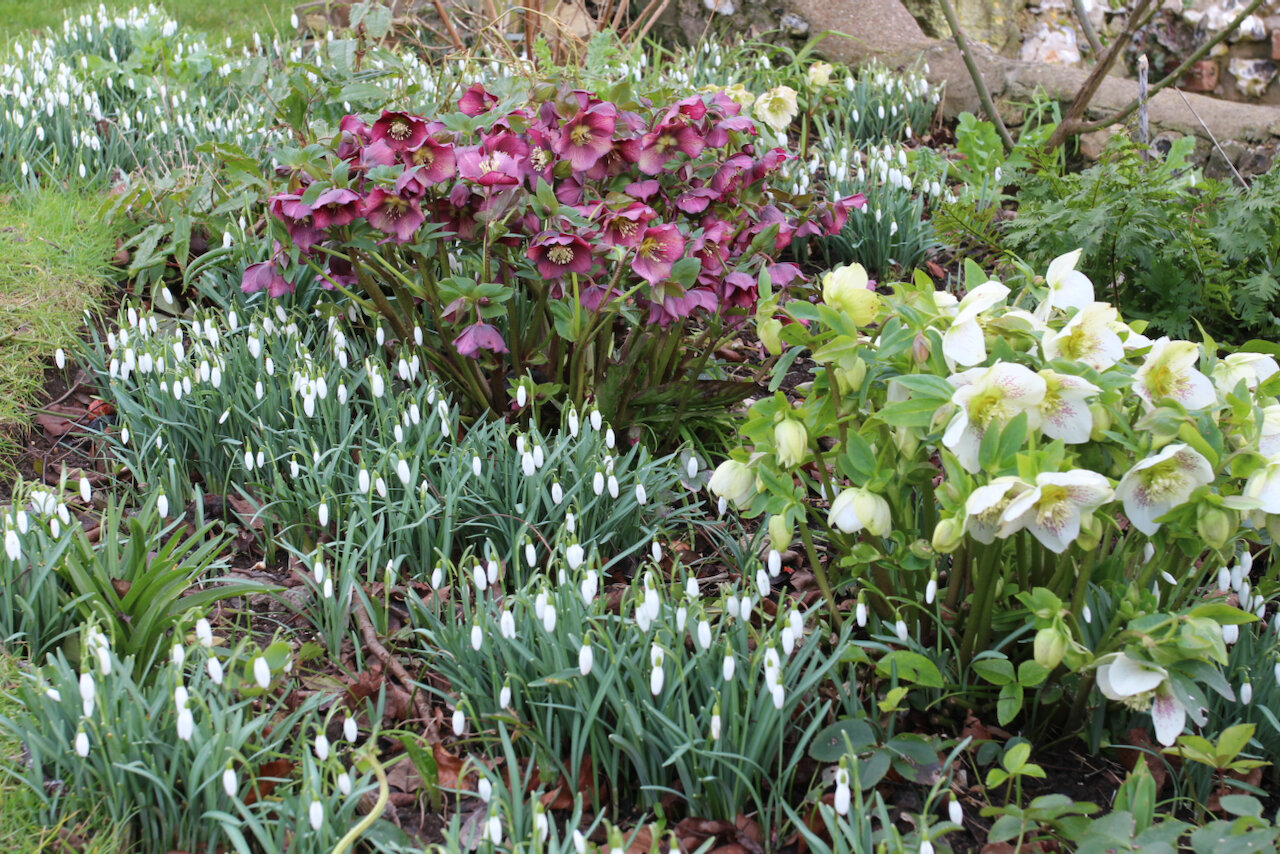You have to admire the plucky little things. Up they pop soon after twelfth night almost regardless of the weather, to encourage us to think that spring might not be too far away. It often is, of course, but it doesn’t stop them bursting through frozen earth when all other self-respecting plants are very much keeping their heads down.
I’m sure all my Loyal Readers know the legend of snowdrops: that after the Good Lord banished Adam and Eve from the paradise of the Garden of Eden into a barren wilderness where no flowers blossomed nor birds sang, poor Eve got very depressed and almost suicidal. Just in time an angel looked down and saw Eve shivering in the snow, weeping, and consoled her, saying the snowflakes will turn into flowers as soon as they touch the earth. And sure enough they did, becoming snowdrops and a symbol of the end of winter with the promise that summer and sunshine will come again.
You probably know, too, that snowdrops attract their own afficionados, galanthophiles. But they baffle me. Apparently there are 20 known species and over 500 cultivars but really one snowdrop looks very much like another, so unless you’re an ant or you get down on your hands and knees, turn them upside down and peer into their eyes I think you might as well stick with good old galanthus nivalis. Particularly when you can spend £120 for a single bulb of, for example, Galanthus Treasure.
The problem we’ve got with snowdrops here is they breed like rabbits and become a bit of a pest. Ours are all the common snowdrop, the galanthus nivalis, which simultaneously drops its seeds and multiplies its bulbs in an effort, it seems, to colonise the whole garden. Much as we love them we’re having to dig them out to provide space for other plants. I live in hope that a tiny clump of doubles - galanthus nivalis flora pleno - that I spotted lurking in the hedge might cohabit with the remainder and produce offspring of such rarity that our fortunes might be made. Non sit delicatus!
Other interesting things about snowdrops (you don’t have to continue reading here…you can skip to the next bit): they hang their heads because they are shy…the ‘drop’ in their name doesn’t refer to a drop of snow but the shape of an ‘eardrop’…their bulbs contain Galanthamine, said to treat Alzheimers…they came from southern Europe in the 16th century and it took them 200 years to become a wild plant…the Victorians associated snowdrops with death and considered it bad luck to bring them indoors… some countryfolk carry snowdrops into their houses to cleanse them…in Sussex, picking the flowers apparently results in thin milk and colourless butter. Quod satis est!
Finally, from last time, the answer to Queen Victoria’s many relatives:









